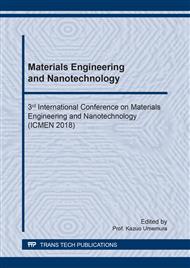p.151
p.159
p.164
p.171
p.178
p.187
p.192
p.198
p.207
Effect of Cr/Mo on Microstructure and Mechanical Properties of Ti-Al-Nb Alloy
Abstract:
Effects of alloying elements (i.e., variable content of Mo and C) on the microstructure and compression properties of four types of experimental material based on TiAl-based alloy containing 8 at.% Nb were investigated. The specimens were prepared by vacuum noncollapsable melting technology and followed by a homogenization treatment with air cooling. The compression properties at room and at elevated temperature were evaluated in laboratory air. The results demonstrate that the inter-lamellar space of the alloy decreased with the addition of the Cr and Mo alloying elements. Cr acts a better role in grain refinement, while Mo enhances the content of γ phase in the alloys. The addition of Cr/Mo elements improves the elastic modulus of the material, but reduces the breaking strength due to the absence of the dislocation region found in non-Cr / Mo alloys that resist cracking. The concentrated distribution of γ phase at grain boundaries hinders recrystallization and the tendency of grain orientation.
Info:
Periodical:
Pages:
178-186
Citation:
Online since:
October 2018
Authors:
Keywords:
Price:
Сopyright:
© 2018 Trans Tech Publications Ltd. All Rights Reserved
Share:
Citation:


